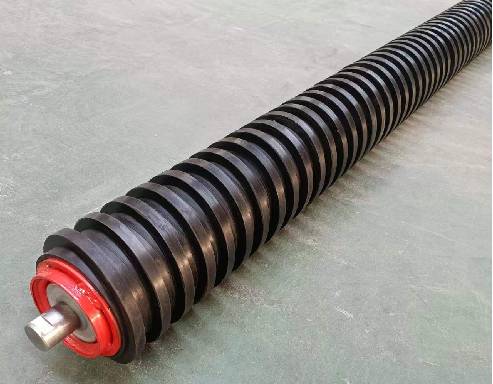 Afrikaans
Afrikaans  Albanian
Albanian  Amharic
Amharic  Arabic
Arabic  Armenian
Armenian  Azerbaijani
Azerbaijani  Basque
Basque  Belarusian
Belarusian  Bengali
Bengali  Bosnian
Bosnian  Bulgarian
Bulgarian  Catalan
Catalan  Cebuano
Cebuano  Corsican
Corsican  Croatian
Croatian  Czech
Czech  Danish
Danish  Dutch
Dutch  English
English  Esperanto
Esperanto  Estonian
Estonian  Finnish
Finnish  French
French  Frisian
Frisian  Galician
Galician  Georgian
Georgian  German
German  Greek
Greek  Gujarati
Gujarati  Haitian Creole
Haitian Creole  hausa
hausa  hawaiian
hawaiian  Hebrew
Hebrew  Hindi
Hindi  Miao
Miao  Hungarian
Hungarian  Icelandic
Icelandic  igbo
igbo  Indonesian
Indonesian  irish
irish  Italian
Italian  Japanese
Japanese  Javanese
Javanese  Kannada
Kannada  kazakh
kazakh  Khmer
Khmer  Rwandese
Rwandese  Korean
Korean  Kurdish
Kurdish  Kyrgyz
Kyrgyz  Lao
Lao  Latin
Latin  Latvian
Latvian  Lithuanian
Lithuanian  Luxembourgish
Luxembourgish  Macedonian
Macedonian  Malgashi
Malgashi  Malay
Malay  Malayalam
Malayalam  Maltese
Maltese  Maori
Maori  Marathi
Marathi  Mongolian
Mongolian  Myanmar
Myanmar  Nepali
Nepali  Norwegian
Norwegian  Norwegian
Norwegian  Occitan
Occitan  Pashto
Pashto  Persian
Persian  Polish
Polish  Portuguese
Portuguese  Punjabi
Punjabi  Romanian
Romanian  Russian
Russian  Samoan
Samoan  Scottish Gaelic
Scottish Gaelic  Serbian
Serbian  Sesotho
Sesotho  Shona
Shona  Sindhi
Sindhi  Sinhala
Sinhala  Slovak
Slovak  Slovenian
Slovenian  Somali
Somali  Spanish
Spanish  Sundanese
Sundanese  Swahili
Swahili  Swedish
Swedish  Tagalog
Tagalog  Tajik
Tajik  Tamil
Tamil  Tatar
Tatar  Telugu
Telugu  Thai
Thai  Turkish
Turkish  Turkmen
Turkmen  Ukrainian
Ukrainian  Urdu
Urdu  Uighur
Uighur  Uzbek
Uzbek  Vietnamese
Vietnamese  Welsh
Welsh  Bantu
Bantu  Yiddish
Yiddish  Yoruba
Yoruba  Zulu
Zulu conveyor bearing housing
Understanding Conveyor Bearing Housing An Essential Component in Material Handling
In the realm of industrial operations, efficiency and reliability are paramount. One of the pivotal components that contribute to the smooth running of conveyor systems is the conveyor bearing housing. This seemingly small yet vital element plays a crucial role in ensuring the longevity and function of conveyor systems employed in various sectors, from manufacturing to logistics.
What is Conveyor Bearing Housing?
Conveyor bearing housing is a protective casing that holds the bearings in place and supports the rotating shafts of conveyors. Typically made from materials like cast iron, steel, or thermoplastics, these housings are designed to withstand the harsh conditions often present in industrial environments, such as dust, moisture, and temperature fluctuations. By encasing the bearings, they provide support and protection, ensuring optimal performance while minimizing wear and tear.
Importance in Material Handling Systems
The primary function of the conveyor bearing housing is to facilitate smooth, efficient rotation of conveyor belts and rollers, which is essential for material handling. The robustness of the housing significantly affects the overall efficiency of the conveyor system. A well-designed bearing housing can minimize vibration, reduce friction, and improve load-carrying capacity, which ultimately leads to increased productivity and decreased downtime.
Moreover, a high-quality bearing housing will help prevent contamination of the bearings by dust and debris, which can lead to premature failure. This means that operators can expect longer service life and reduced maintenance costs, allowing organizations to allocate their resources more effectively.
Design and Features
conveyor bearing housing

When it comes to the design of conveyor bearing hoppers, several factors must be considered to ensure maximum effectiveness. The dimensions need to align precisely with the size of the bearings they house, allowing for proper fit and function. Many modern designs include features such as reinforced seals or shields to provide added protection against contaminants.
Additionally, variations exist depending on the specific application of the conveyor system. For example, housings in food processing conveyors might require materials that are compliant with food safety regulations, while heavy-duty systems might necessitate stronger materials to endure larger loads.
Maintenance Considerations
Maintaining conveyor bearing housings is vital for sustaining optimal operations. Regular inspections should be performed to check for signs of wear, corrosion, or misalignment. Greasing and lubrication are also crucial to ensuring that the bearings remain well-oiled and functioning smoothly.
Failure to address maintenance needs can lead to bigger problems, such as unexpected breakdowns or complete system failures, which could result in costly downtime for the business.
Conclusion
In summary, conveyor bearing housing is a critical component of any material handling system. Its role in maintaining bearing integrity directly impacts the efficiency, reliability, and longevity of conveyor operations. By investing in high-quality conveyor bearing housings and adhering to regular maintenance schedules, businesses can enhance their operational productivity, minimize downtime, and ultimately achieve a more streamlined production process. As industries continue to evolve, the importance of these essential components will remain as significant as ever.
-
Revolutionizing Conveyor Reliability with Advanced Rubber Lagging PulleysNewsJul.22,2025
-
Powering Precision and Durability with Expert Manufacturers of Conveyor ComponentsNewsJul.22,2025
-
Optimizing Conveyor Systems with Advanced Conveyor AccessoriesNewsJul.22,2025
-
Maximize Conveyor Efficiency with Quality Conveyor Idler PulleysNewsJul.22,2025
-
Future-Proof Your Conveyor System with High-Performance Polyurethane RollerNewsJul.22,2025
-
Driving Efficiency Forward with Quality Idlers and RollersNewsJul.22,2025





























